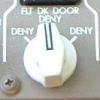
-
Content Count
334 -
Donations
$0.00 -
Joined
-
Last visited
Content Type
Profiles
Forums
AVSIM
Media Demo
Downloads
Gallery
Blogs
Forms
Everything posted by Qavion2
-
I can't figure out how you got into CRZ thrust mode at 500'. When did you arm the autothrottle? Before or after takeoff? 1.2 EPR is definitely not a normal thrust limit value for CRZ. Even in CRZ mode, you should get much more thrust. The 777 is not *that* different from the 747-400 Cheers John H Watson
-
Note that oil levels may change depending on how long the engines have been shut down. We used to check oil levels 5~10 minutes after shutdown and then top them up as required. If you checked them an hour later, you'd notice that the levels had dropped... but you wouldn't put more in. If you did that, the engine would have too much oil when it was running. Oil does all kinds of crazy stuff. Sometimes it hides*, but depending on the engine type, it might not be of concern. *indicated oil level lower than what's actually in the engine Cheers John H Watson
-
For the tech gurus.... I have the feeling that the IRUs in PMDG are overly sensitive to power changes. There are very few power transfer combinations on the 744 which result in power breaks. Normally the aircraft will seamlessly transfer power from one source to another. The 747-400 was probably one of the first aircraft to be designed with computer power sources in mind. The designers created a system which transfers power without even a millisecond interruption. Prior to transfer, the new power source is synchronised to the old one.. and for a few moments during the power transfer process, both power sources are put online *at the same time* prior to tripping off the original power source. The only critical time I can think of is when the IRUs are in the early stages of alignment and the IRUs are testing their ability to transfer between AC electrical sources to backup DC sources. This lasts about 5 seconds only. If the IRUs need backup DC power, they will use the APU "Hot" Battery Bus. To prevent power interruptions during APU start, the IRU DC power is switched over to the Main Hot Battery Bus. The battery switching process involves normal electrical relays and there may be millisecond breaks in power. If this millisecond break happens to correspond to the 5 second IRU AC to DC testing period, only then can I see the IRUs having problems. When running on AC power, the IRUs don't need DC power at all. Cheers John H Watson
-
What MCP style is fitted depends on what you have in stock. Tomorrow they could change back to the new style, so I don't know why it should bother pilots or simmers. With CRT vs LCD instrument displays, the matter gets a little more complicated. There are software issues to consider. (EDIT: From memory, I believe single displays may be changed to CRT/LCD for a certain time period. e.g. to get you home (if the unit fails at an outstation) ...or perhaps until the MEL expires. For long term, it's best to change all the displays to a single type. Cheers John H Watson
-

Cold and dark too cold. Stuck in PANC...
Qavion2 replied to LABOX's topic in PMDG 747 Queen of the Skies II
Arne, if you have hydraulic pumps #2 and #3 which are air-driven, it may be best to switch these off for engine start. They will be competing for APU bleed air... You need all the air you can get for starting the engines) If the temperatures are really cold, it may be necessary to manually spin the engines for a certain time period to warm up the oil (before putting the fuel control levers to RUN). If the temperatures are super super cold, I believe engineering has to warm up the oil by other methods (I'm not sure how they do that.... Thankfully, I've never worked in such areas ) Cheers John H Watson -
There is a way on the real aircraft, but it's usually only used by engineers and is in a different format to the normal pedestal display. It shows the stabiliser position input into the 3 Flight Control (Autopilot) computers and the magic boxes which compute the stab trim greenband (on the pedestal indicators). Depending on your Centre of Gravity, wrong stab trim settings of, perhaps, half a unit may trigger EICAS warnings. For example, if the forward (nose down) Greenband is illuminated on your pedestal indicators and your stab trim is 1/2 unit outside the Greenband, you may get a takeoff warning. Cheers John H Watson.
-
I would expect the oils to be checked by the maintenance department after every flight on the EICAS and physically, at the engine, at least once a day. The pilots, of course, check it before each flight on EICAS. RR's tend to use a lot of oil (2~3 quarts/litres per engine), GEs slightly less, but PWs use hardly any. Thankfully, APU's don't need to be topped up too often, but levels are checked every day on EICAS. Engine oil usage greater than 0.5 quarts an hour is a cause for concern. Cheers John H Watson P.S. Don't hire Dan to do your maintenance



